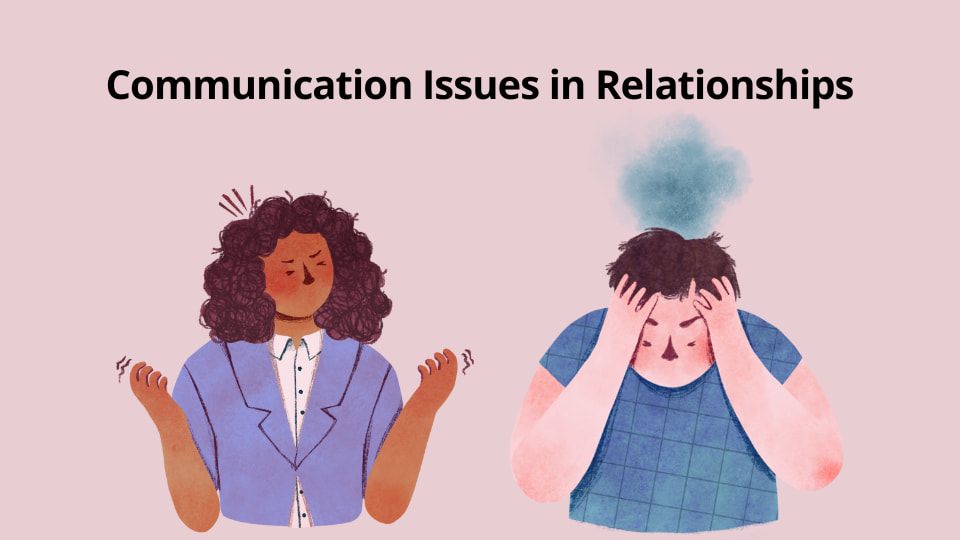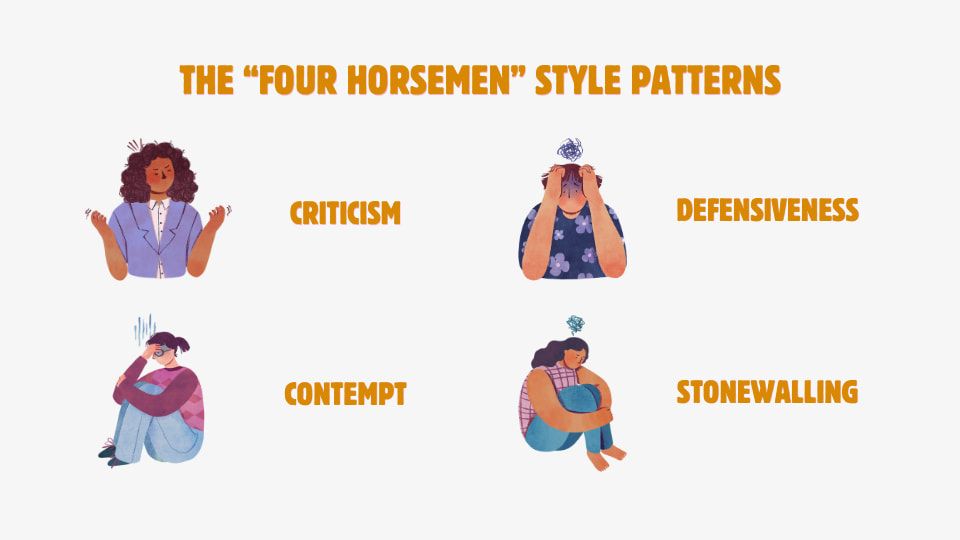Want to understand what’s really going on between you two?
Many communication issues come from the part you can’t see. VigilKids gives you real-time screenshots and message insights, helping you understand your partner’s state before the conversation begins—so you’re not left guessing.
You are not alone if conversations with your partner feel strained or go in circles. Communication issues in relationships are common and can be both a symptom and a cause of bigger problems. Sometimes poor communication is a skill gap you can fix together. Other times it reveals deeper issues that need more than tips.

In this article you will get a quick checklist to diagnose communication issues in a relationship, step by step tools for how to fix communication problems in relationships and clear signs for when to seek professional help. Let's dive in!
- Table Of Contents
- Why communication breaks down: Root causes of communication issues in relationships
- Common patterns of communication problems in relationships & red flags to watch for
- Practical toolkit: How to fix communication issues in relationships
- When "better communication" isn't enough
- 30/60/90 Day Action Plan & Quick Resources
-
Digital secrecy, evidence & rebuilding trust
- FAQs on communication issues in relationships
Why communication breaks down: Root causes of communication issues in relationships
Emotional drivers: unmet needs and past wounds
Often what looks like poor communication skills in relationships is really pain showing up. You might feel ignored, unsafe, or hurt by past events. Those feelings make you more reactive and less likely to listen.
When unmet needs pile up, small comments trigger big reactions. Healing emotional wounds and naming needs reduces misreadings and lowers the chance that a simple talk becomes a fight.
Interaction patterns: defense, counterattacks, silence, repeating fights
Couples fall into predictable loops. One partner criticizes, the other becomes defensive. Someone shuts down, and the same argument gets replayed. These patterns are learned and can feel automatic.
If you keep repeating the same script, skill training helps, but you also need to interrupt the loop with agreed rules. Without that, poor communication skills in a relationship become the default and problems compound over time.
External stressors and life changes
Money trouble, new babies, job pressure, or illness make it harder to stay patient. You both have less bandwidth, so small misunderstandings grow.
Recognize stress as a multiplier. When life is chaotic, plan brief check-ins and simpler conversations so you avoid escalating minor issues.
Digital secrecy and miscommunication
Hidden messages, deleted chats, and late-night scrolling can fuel mistrust and fuel communication issues in relationships dynamics. Digital secrecy creates gaps between what you assume and what is true.
Addressing transparency and agreeing on boundaries around devices helps restore trust and makes real conversations possible.
Common patterns of communication problems in relationships & red flags to watch for
The "Four Horsemen" style patterns
Relationship researchers led by John Gottman call four behaviors especially destructive in all the communication issues in relationships. You can spot them like this:
- 1.Criticism: you attack your partner's character instead of naming a behavior. Example: "You always ignore me" instead of "When you left, I felt ignored."
- 2.Contempt: you mock or belittle, which kills respect and connection.
- 3.Defensiveness: you answer blame with blame rather than owning any part.
- 4.Stonewalling: one of you withdraws and stops responding.

If you see one or more of these regularly, communication problems in relationships are likely to worsen unless you change the pattern.
The 6 recurring problems
Many couples present these same 6 communication issues in relationships again and again. Watch for these signs:
- Silence: one partner shuts down and avoids talking.
- Repeating the same argument over and over with no solution.
- Defending or justifying instead of listening and validating.
- Control or righteous behavior where one person insists they are right.
- Escalation: small disagreements turn into yelling or name calling.
- Conditional change: "I will change only if you change" which creates stalemate.
These patterns create a loop where poor communication skills in relationships become the norm. You can break the loop by naming the pattern and agreeing on rules for talking.
When communication is being used to avoid accountability
Sometimes "communication issues in relationships" are used as a cover. If one partner refuses to change, hides harmful behavior, or blames the other for every problem, the issue may be about accountability rather than skill. In those cases improving technique will not fix the core problem. You need clear boundaries, honest feedback, and sometimes outside help to resolve it.
Practical toolkit: How to fix communication issues in relationships
Improving specific skills often changes interactions quickly, because habits are replaceable and small wins build trust. This section shows clear steps for how to fix communication issues in a relationship with tools you can use today.
Active listening, step by step
Practice listening to understand, not to prepare your reply. Try this routine each time you talk:
- Step 1.Stop what you are doing and make eye contact.
- Step 2.Paraphrase what you heard, for example, "So you feel upset because the plans changed, is that right?"
- Step 3.Ask a short clarifying question if needed.
- Step 4.Validate the feeling, for example, "I can see why that would bother you."
- Step 5.Only then share your perspective.
This method prevents reactivity and answers the common way of how to communicate problems in a relationship question with a simple, repeatable pattern.
Using "I" statements and behavior focused language
When dealing with communication issues in relationships, remember to frame concerns around your feelings and observable actions. Use this template: "I feel [emotion] when you [specific behavior], because [short reason]."
Example:"I feel lonely when we both scroll phones at dinner, because I miss talking with you."
This reduces blame and helps your partner hear the need behind the words.
Soothing and pause script for stonewalling
When you or your partner feel overwhelmed, use a short script to pause safely. Try this: "I need a break to calm down. Can we pause for 20 minutes and come back to finish this?"
During the break, use a calming routine: slow breathing for two minutes, a quick walk, or a grounding exercise. Agree on a return time so the pause does not turn into avoidance.
Repair attempts, how to apologize and accept apology
Apology is also a very important part of trying to fix communication issues in relationships. A good apology includes these elements: brief acknowledgement of the harm, a specific action you will change, and a request to repair.
Example: "I was wrong to snap at you. I will check my tone and ask for a pause next time. Can we talk about how to move on?"
To accept an apology, acknowledge the effort and describe what you need next, for example, "Thank you, I appreciate that. I need us to try the pause script if things get heated."
Structure conversations, timing, goal setting, and check-ins
Pick a time when neither of you is rushed, set a clear goal for the talk, and keep it short. Use a 15 minute relationship check template:
- Minute 1 to 2: share one positive thing that happened this week.
- Minute 3 to 8: each person describes one concern using "I" statements.
- Minute 9 to 12: brainstorm small steps to address the concern.
- Minute 13 to 15: agree on one action and a time to review progress.
This routine answers how to fix communication problems in a relationship by creating predictable, low pressure space for issues.
Sample scripts and mini exercises you can try right away
- The Two Minute Turn exercise five times this week. One partner speaks for two minutes while the other only listens and paraphrases.
- The Check In three times this week. Use the 15 minute template and focus on one small action.
- The Repair Practice after any small conflict, practice the apology and acceptance script within 24 hours.
These drills help you practice fixing communication issues in a relationship and make real progress on how do you fix communication problems in a relationship.
When "better communication" isn't enough
Can you fix poor communication in a relationship? Often you can improve interactions with skill practice, but not always. Communication issues in relationships sometimes point to deeper problems that skills alone cannot resolve. If patterns keep repeating despite honest effort, you may be facing issues that need more than scripts and check-ins.
Signs of deeper issues (abuse, incompatibility, addiction, chronic disrespect)
Watch for signs that go beyond bad habits like:
- Ongoing emotional or physical abuse
- Repeated betrayal of trust
- Addiction that interferes with daily life
- persistent contempt and chronic disrespect
If one partner consistently refuses to take responsibility or repeatedly violates agreed boundaries, the core problem of the communication issues in relationships here is not a technique gap. In those cases, improving communication skills will not stop the harm.
When to seek couples therapy, mediation, or consider separation
- Seek professional help if you try the toolkit for several weeks and patterns remain, if safety is a concern, or if major issues like addiction or infidelity are unresolved.
- Consider mediation when negotiations over money, parenting, or living arrangements stall.
- Think about separation if therapy does not reduce harm, one partner refuses to engage, or your well being and safety are at risk.

30/60/90 Day Action Plan & Quick Resources
Here's a simple timeline to start fixing communication issues in a relationship and keep progress realistic. Use it as a roadmap to rebuild healthy dialogue step by step.
30-Day Plan:
Create shared communication rules like no interrupting, no name-calling, and take timeouts when needed. Hold one weekly 15-minute check-in using the structure from earlier. Practice active listening in every important talk. Focus on understanding rather than winning.
60-Day Plan:
Add repair attempt exercises and the apology framework. Schedule at least one neutral activity like a couples workshop, guided reading plan, or short therapy session to refresh perspective. Keep practicing how to communicate problems in a relationship calmly and with empathy.
90-Day Plan:
Assess what has improved. Notice if arguments end faster, if you both feel heard, and if trust is returning. Decide the next step—continue regular practice, seek professional counseling for deeper issues, or set new boundaries if harm or disrespect continues.
Quick Help Checklist:
- If you feel unsafe, get help immediately.
- If talks go nowhere after repeated effort, consider therapy.
- If trust keeps eroding, pause and reassess your needs.
Digital secrecy, evidence & rebuilding trust
Hidden chats, deleted messages, and anonymous social activity can speed up communication issues in a relationship. What was once a small misunderstanding becomes a trust problem when you do not know what happened between you and your partner. Instead of letting assumptions grow, handle digital gaps carefully so they help you reopen honest conversation rather than turn into proof for an argument.
Ethical monitoring vs covert spying
If you are a parent worried about a teen who has communication issues in relationships with you, evidence can protect rather than punish. Use monitoring only with clear reasons, and aim for transparency whenever possible. Tell your child what you are checking and why, agree boundaries about privacy, and focus on safety and learning.
Covert spying creates resentment and makes poor communication skills in a relationship worse, so prefer consent and explain your goals before you act. If you cannot get consent, check legal rules in your area and consider professional guidance first.
Tool spotlight: VigilKids
VigilKids provides real-time chat monitoring, screenshots, screen recording, location tracking, and keyword alerts that flag risky words or behaviors. Parents can use these features to gather facts, find safety concerns, and prepare a calm, evidence-informed conversation instead of accusing or shouting.

Use the app to collect examples that illustrate a pattern, then share them in a non-accusatory way and ask questions like, "Can you help me understand this night chat?" Remember to follow local laws and prioritize open dialogue over control.
FAQs on communication issues in relationships
Q1: How long does it take to fix communication problems in a relationship?
Progress varies, but most couples notice change within one to three months when they consistently apply listening, "I" statements, and repair skills. The key is steady practice, not perfection.
Q2: Can you fix poor communication in a relationship if one partner refuses?
Improvement is limited if only one person participates. You can model calm communication and set boundaries, but lasting change usually requires both partners' commitment or professional guidance.
Q3: Is monitoring my teen's phone an acceptable way to address communication issues?
It can be, if done transparently and legally. Tools like VigilKids help parents detect risks through chat and screen monitoring, but they should be used to start caring, evidence-based conversations, not control. Always check local laws and prioritize trust building.
Conclusion
Communication issues in relationships don't have to end connection. With awareness, consistent practice, and the right tools, you can rebuild understanding and trust. Whether it's between partners or family members, small daily efforts turn tense conversations into healthy dialogue and lasting emotional safety.
